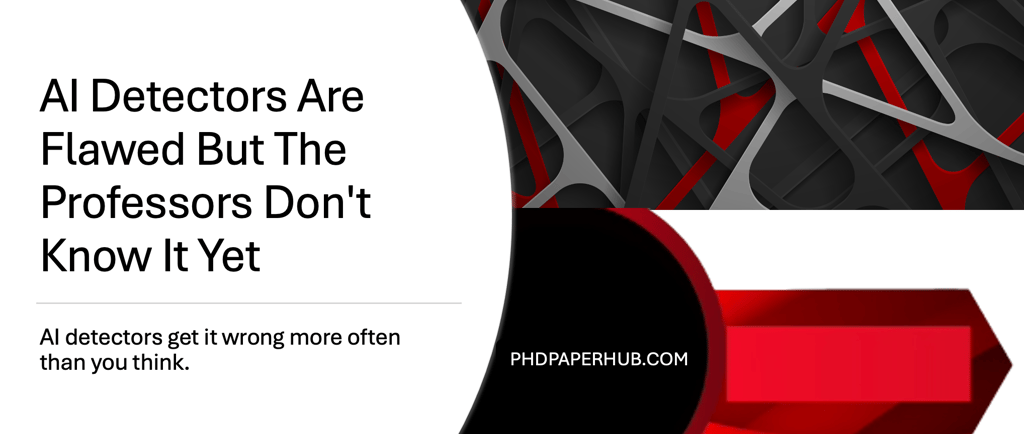AI Detectors Are Flawed But The Professors Don't Know It Yet
While AI detection tools claim to spot machine-written text, they often misfire—flagging human work as AI-generated and missing actual AI output. Yet many educators still trust them blindly, unaware of how unreliable these systems really are.
Marti Dryk
10/29/20251 min read


Around the world, professors are turning to AI detectors to catch students who use tools like ChatGPT to write essays or research papers. But here’s the truth: AI detectors are far from perfect — and many educators don’t realize just how unreliable they really are.
Most AI detection tools rely on statistical patterns and “perplexity” scores to guess whether a human or a machine wrote text. The problem? These systems are often wrong. They can flag perfectly original student work as AI-generated simply because it’s well-written or uses predictable language. Meanwhile, a few clever tweaks — like paraphrasing or running text through another model — can fool the same detectors instantly.
This creates a dangerous illusion of control. Professors trust the software, thinking it’s objective, when in reality, it’s guessing. And when those guesses lead to false accusations, it’s students who pay the price.
AI in education isn’t going away — but instead of relying on flawed detectors, it’s time for educators to focus on guidance, not punishment. Teach students how to use AI ethically and intelligently, rather than trying to outsmart it. Because if there’s one thing we’ve learned, it’s that the detectors might not be as smart as they seem.
Worried about AI detectors flagging your research as AI-generated? Reach out to us, let us help you retain the originality of your work.
Quality
Expert editing for your PhD academic work.
Support
Service
+1 (512) 461-2659
© 2025. All rights reserved.
